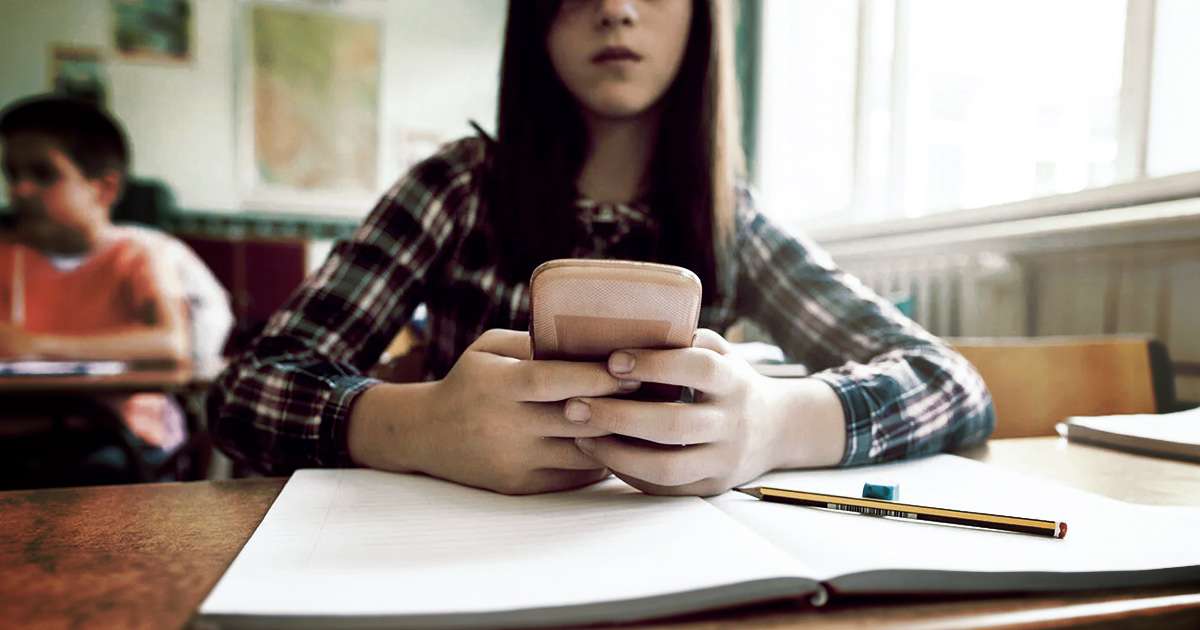The Case for Mobile Phones in Schools: Why They Should Be Allowed

The advent of mobile phones has brought a significant shift in our lifestyle and culture. Today, they have become an indispensable part of our lives, transforming the way we communicate, access information, and interact with the world. A study by IGI Global reveals how mobile phones have profoundly affected people’s daily activities and social interactions.
However, the mass usage of mobile phones, particularly among teenagers and children, has also led to some negative impacts, such as addiction to games and social media. This has prompted rules and regulations within schools to regulate their usage. Despite these concerns, there are compelling reasons to reconsider the ban on phones in schools. But is it fine to allow phones at school? Let’s delve into that.
13 Reasons Why Students Should Be Allowed to Use Phones in School
Here are 13 compelling reasons why students should be allowed to use phones in school, highlighting the educational benefits and opportunities for skill development that mobile technology can offer.
Enhanced Learning
Mobile phones are essentially portable, interactive classrooms. Educational apps like Duolingo, science simulators, or math apps like Photomath transform complex concepts into engaging experiences, enhancing students’ understanding and retention. Despite concerns about screen time, the educational benefits cannot be overlooked. To counteract potential addiction, schools can encourage scheduled breaks from screens and promote healthy digital habits.
Instant Access to Information
In our information age, having instant access to data is critical. Mobile phones serve as gateways to this vast knowledge, fostering a culture of curiosity and continuous learning. While it’s true that not all information online is reliable, this presents an opportunity to teach students critical thinking and discernment in identifying credible sources.
Emergency Contact
Safety is a primary concern for parents and schools alike. With mobile phones, students can reach out to parents or emergency services promptly, providing peace of mind for everyone involved. Schools can implement guidelines about phone usage during school hours to ensure they are used responsibly.
Skill Development
Digital literacy, problem-solving, and communication—these skills are crucial in our digital world. Mobile phones provide a platform for students to acquire and hone these skills. To prevent over-reliance on digital tools, educators can balance digital activities with traditional teaching methods.
Collaboration
The collaborative features of many apps mimic the team-based structure of many modern workplaces. This experience in digital collaboration prepares students for future careers. To avoid incessant messaging and distraction, schools can set boundaries on when and how these tools should be used.
Organization
Mobile phones can help students manage their time and tasks effectively, fostering a sense of responsibility and independence. To mitigate the risk of procrastination on other phone features, schools can teach students about productivity apps and methods.
Creativity
From digital art to music creation, mobile phones offer a plethora of avenues for students to express their creativity. While it’s important to balance digital and physical creative outlets, the potential of these tools to inspire creativity is undeniable.
Parent-Teacher Communication
Regular communication between parents and teachers is key to academic success. Mobile phones bridge this gap effectively. To avoid misuse, schools can establish protocols for this communication, ensuring it remains professional and productive.
Inclusivity
For students with special needs, mobile phones can be life-changing. They provide support tools that can significantly enhance learning experiences. Schools can work with special education professionals to ensure these tools are used effectively.
Independent Learning
Mobile phones allow students to learn at their own pace, fostering a love for lifelong learning. While self-directed learning is beneficial, it’s also crucial to guide students in managing their learning journey and knowing when to ask for help.
E-books and Online Textbooks
The convenience of having textbooks at their fingertips can significantly enhance a student’s learning experience. It’s lighter, searchable, and more environmentally friendly. Schools can teach students how to use these resources effectively, balancing screen time with traditional reading methods.
Real-world Applications
In a world where technology is interwoven into the fabric of most professions, understanding its practical applications is crucial. Using mobile phones in schools provides this practical understanding, preparing students for the future. Teachers can guide students on how to use technology responsibly and ethically.
Environmental Impact
The shift to digital reading materials and assignments can significantly reduce paper usage, contributing to environmental conservation. While it’s essential to teach students the importance of sustainability, it’s equally important to balance digital and paper-based tasks to avoid digital fatigue.
Striking the Right Balance with Mobile Phones in Schools
Yes, cell phones can be very useful for helping students learn, being creative, and getting ready for a digital future. But they should be used in schools along with traditional ways of teaching and should be closely watched to make sure they help students learn and don’t get in the way.
Setting clear rules, teaching students about digital responsibility, and keeping an eye on their use are all important ways to stop misuse. This means putting limits on when and how students can use their phones, encouraging good digital habits like taking breaks from screens often, and teaching them how to find reliable sources online.
Schools can also work closely with parents to make sure that the benefits of cell phones are also used for learning at home, as long as the same level of supervision and control is maintained. This way of working together can help get the most out of mobile technology in the classroom.
Mobile phones can definitely be used in the best way to improve our students’ learning, give them important digital skills, and get them ready for the opportunities and challenges of the 21st century, as long as they are used in moderation and under supervision. Mobile phones have a huge amount of potential to be used in education, and it’s up to us to make the most of it in a smart way.

